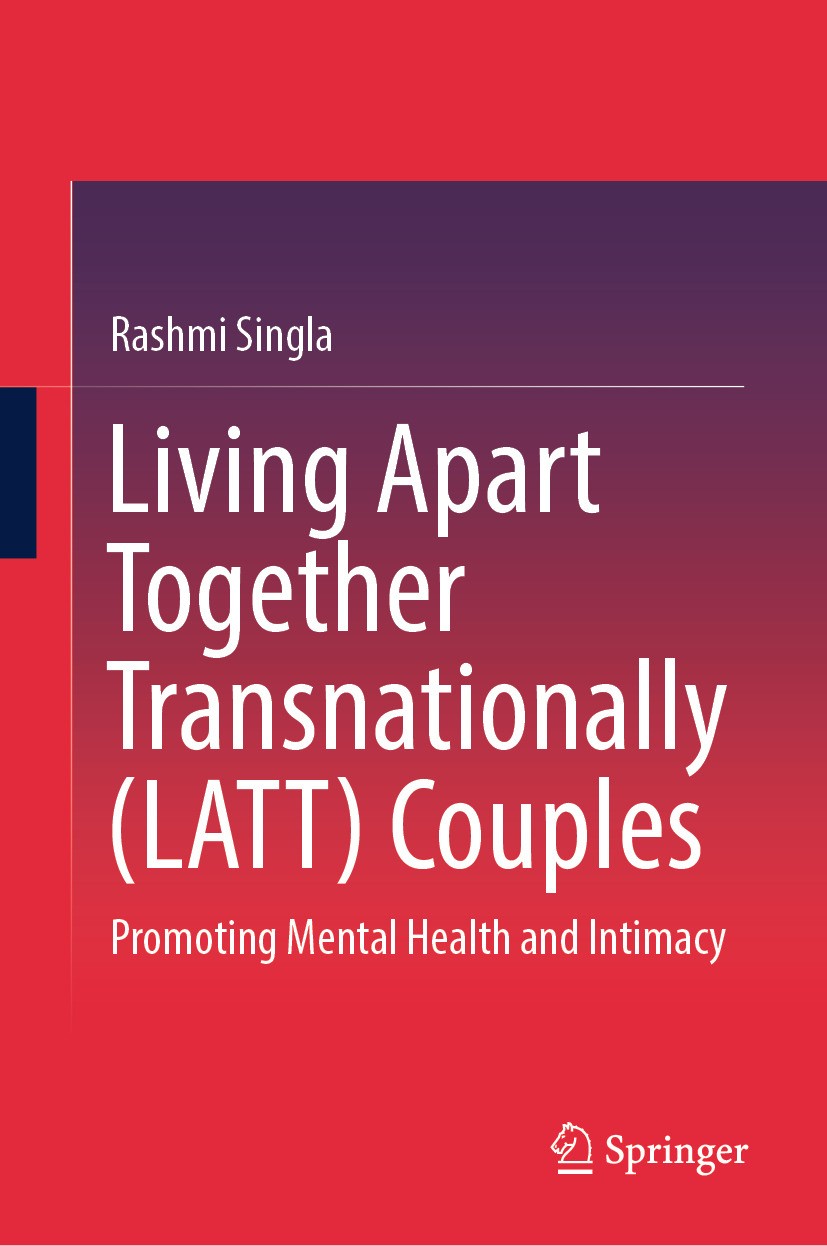| 书目名称 | Living Apart Together Transnationally (LATT) Couples | | 副标题 | Promoting Mental Hea | | 编辑 | Rashmi Singla | | 视频video | http://file.papertrans.cn/588/587458/587458.mp4 | | 概述 | Demonstrates how Living Apart Together Transnationally couples use emotional reflexivity.Includes data from couples of mixed ethnic heritage and co-ethnic couples.Includes recommendations for empirica | | 图书封面 |  | | 描述 | .This book provides deep insight into intimacy and distance in the complex, globalised world through the newly coined concept of couples living apart together transnationally (LATT). Based on a review of the past four decades’ seminal studies and narratives from a qualitative empirical study, including both heterosexual and same-sex couples, it shows intimacy can be maintained without geographical proximity. The book has a rich, layered, and nuanced exploration of LATT couples‘ experiences of relationship maintenance across distance and time through diverse ways, such as digital emotions, online sexual activity, and meaning–making through spirituality, which challenge existing Eurocentric conceptualisations of intimacy and relationships. It also reveals an array of “good practices” for relationship maintenance across countries, which can inspire other couples and practitioners...Thus, the book is an important resource, not only for academics in the disciplines of psychology, anthropology, cultural studies, family science, sociology, migration, and communication but particularly useful for practitioners dealing with couple relationships, such as counselors, social workers, and ment | | 出版日期 | Book 2024 | | 关键词 | Couples Living Apart Together (LAT); Couples Living Apart Together Transnationally (LATT); Counter Dom | | 版次 | 1 | | doi | https://doi.org/10.1007/978-3-031-52205-5 | | isbn_softcover | 978-3-031-52207-9 | | isbn_ebook | 978-3-031-52205-5 | | copyright | The Editor(s) (if applicable) and The Author(s), under exclusive license to Springer Nature Switzerl |
The information of publication is updating

|
|
 |Archiver|手机版|小黑屋|
派博传思国际
( 京公网安备110108008328)
GMT+8, 2025-11-11 22:30
|Archiver|手机版|小黑屋|
派博传思国际
( 京公网安备110108008328)
GMT+8, 2025-11-11 22:30


